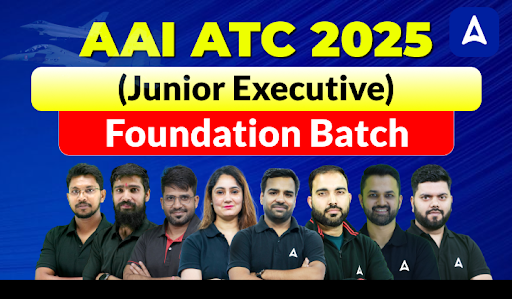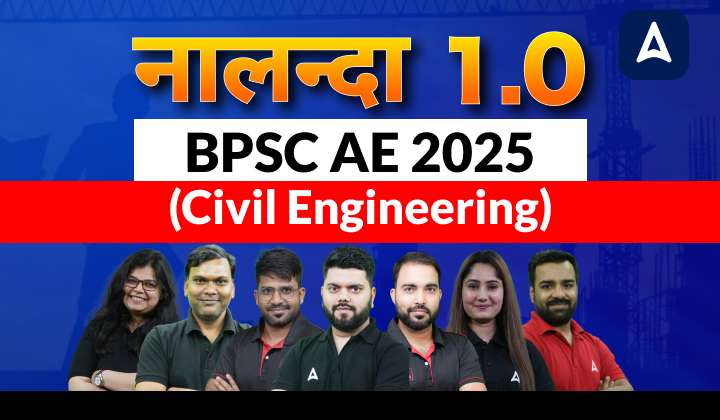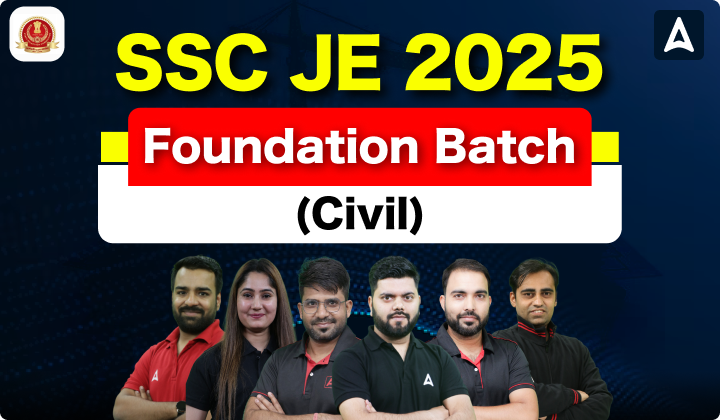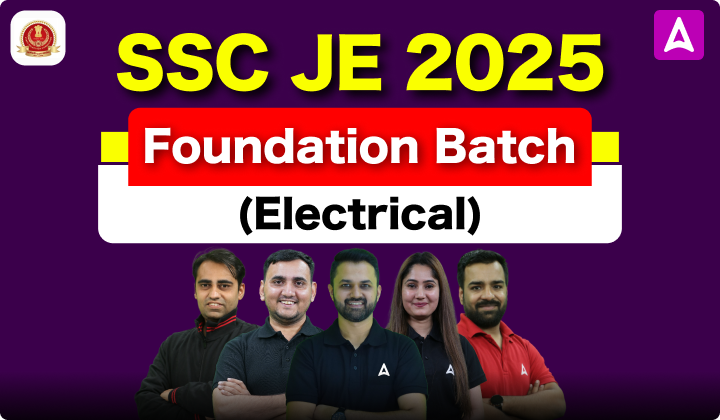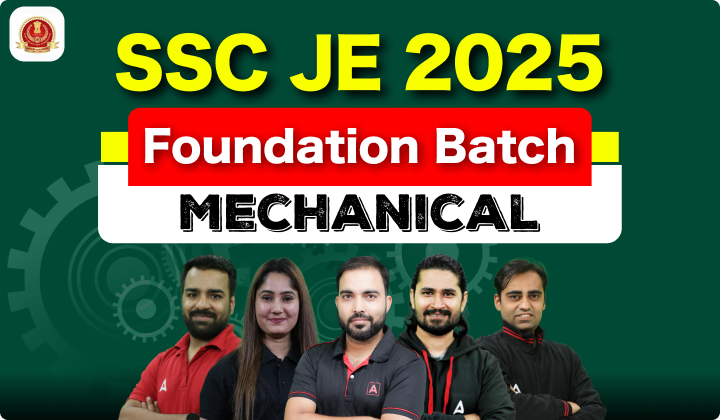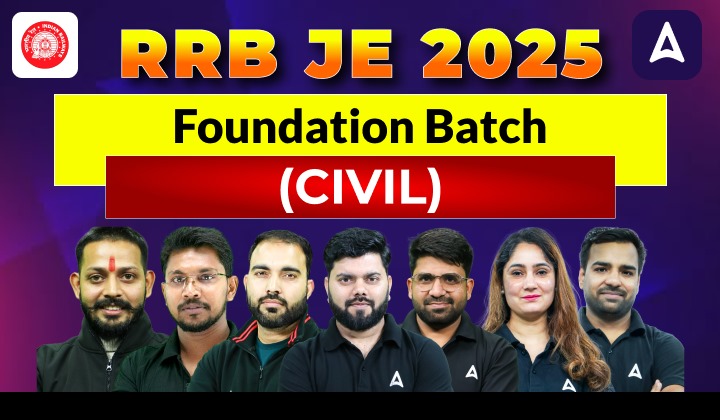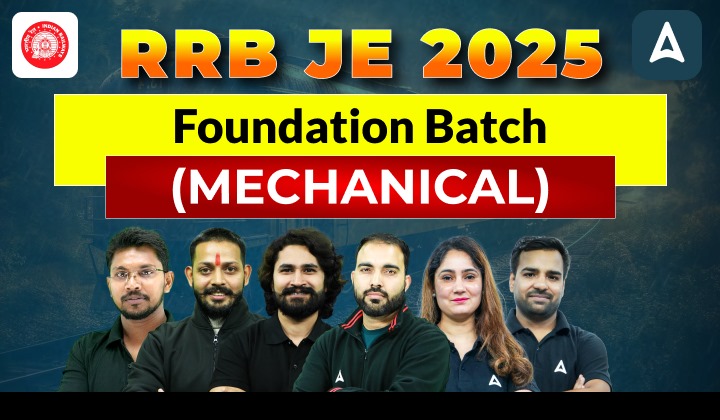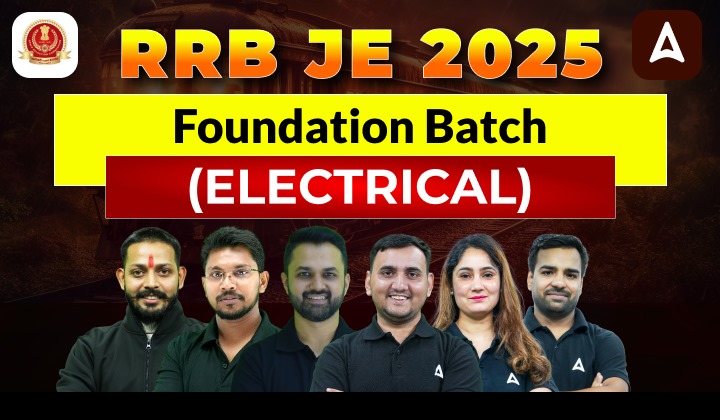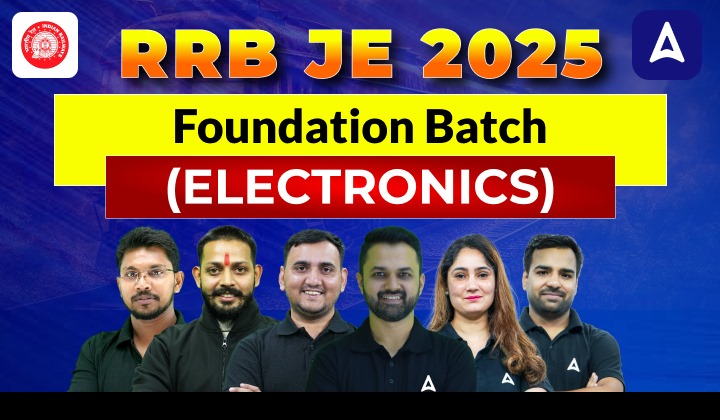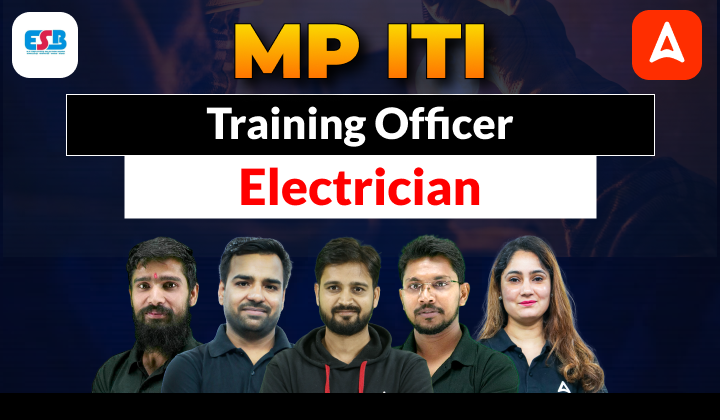Table of Contents
NHPC JE All India Live Mock Test Only on Adda247 App!
UPPCL AE Syllabus 2021, Official UPPCL Syllabus for Assistant Engineer. Uttar Pradesh Power Corporation Limited has rolled out the official notification for the recruitment of Assistant Engineers and Junior Engineers for a total of 286 UPPCL Vacancy 2021. The Online submission of the application form for UPPCL Recruitment 2021 starts on 12th November 2021 and the last date to apply for the same is 2nd December 2021. The UPPCL AE Syllabus, as defined by the UPPCL Recruitment board is the same as GATE 2021 Syllabus for the respective Engineering branch. Here we’re giving the detailed UPPCL AE syllabus 2021.
Now keep yourself updated with Latest Engineering Government Jobs 24×7 Download ADDA247 App Now! CLICK HERE
UPPCL AE Syllabus 2021 Exam Overview
| UPPCL AE Syllabus 2021 | |
| Organization Name | Uttar Pradesh Power Corporation Limited |
| Posts | Assistant Engineer and Junior Engineer |
| Total Vacancies | 286 |
| Online Application Starts | 12th November 2021 |
| Mode Of Application | Online |
| Category | UP State Government Jobs 2021 |
| Official Website | upenergy.in |
UPPCL AE Syllabus 2021
according to the UPPCL JE Notification 2021, the syllabus for JE will be the same as that of GATE 2021, the detailed UPPCL Branch-wise Syllabus for UPPCL AE Recruitment 2021 is given below.
UPPCL AE Syllabus for Electrical Engineering
Electrical Circuits:
Network elements: ideal voltage and current sources, dependent sources, R, L, C, M
elements; Network solution methods: KCL, KVL, Node and Mesh analysis; Network Theorems: Thevenin’s, Norton’s, Superposition and Maximum Power Transfer theorem; Transient response of dc and ac networks, sinusoidal steady-state analysis, resonance, two port networks, balanced three phase circuits, star-delta transformation, complex power and power factor in ac circuits.
Electromegnetic Fields:
Coulomb’s Law, Electric Field Intensity, Electric Flux Density, Gauss’s Law, Divergence,
Electric field and potential due to point, line, plane and spherical charge distributions, Effect of
dielectric medium, Capacitance of simple configurations, Biot-Savart’s law, Ampere’s law,Curl, Faraday’s law, Lorentz force, Inductance, Magnetomotive force, Reluctance, Magnetic circuits, Self and Mutual inductance of simple configurations.
Signals and Systems:
Coulomb’s Law, Electric Field Intensity, Electric Flux Density, Gauss’s Law, Divergence,
Electric field and potential due to point, line, plane and spherical charge distributions, Effect of
dielectric medium, Capacitance of simple configurations, Biot-Savart’s law, Ampere’s law,Curl, Faraday’s law, Lorentz force, Inductance, Magnetomotive force, Reluctance, Magnetic circuits, Self and Mutual inductance of simple configurations.
Electrical Machines:
Single phase transformer: equivalent circuit, phasor diagram, open circuit and short
circuit tests, regulation and efficiency; Three-phase transformers: connections, vector
groups, parallel operation; Auto-transformer, Electromechanical energy conversion
principles; DC machines: separately excited, series and shunt, motoring and generating
mode of operation and their characteristics, speed control of dc motors; Three-phase
induction machines: principle of operation, types, performance, torque-speed characteristics, no-load and blocked-rotor tests, equivalent circuit, starting and speed control; Operating principle of single-phase induction motors; Synchronous machines: cylindrical and salient pole machines, performance and characteristics, regulation and parallel operation of generators, starting of synchronous motors; Types of losses and efficiency calculations of electric machines
Power Systems:
Basic concepts of electrical power generation, ac and dc transmission concepts, Models
and performance of transmission lines and cables, Economic Load Dispatch (with and
without considering transmission losses), Series and shunt compensation, Electric field
distribution and insulators, Distribution systems, Per-unit quantities, Bus admittance
matrix, Gauss- Seidel and Newton-Raphson load flow methods, Voltage and Frequency
control, Power factor correction, Symmetrical components, Symmetrical and unsymmetrical fault analysis, Principles of over-current, differential, directional and distance protection; Circuit breakers, System stability concepts, Equal area criterion.
Control Systems:
Mathematical modeling and representation of systems, Feedback principle, transfer function, Block diagrams and Signal flow graphs, Transient and Steady-state analysis of linear time invariant systems, Stability analysis using Routh-Hurwitz and Nyquist criteria, Bode plots, Root loci, Lag, Lead and Lead-Lag compensators; P, PI and PID controllers; State space model, Solution of state equations of LTI systems.
Electrical and Electronic Measurements:
Bridges and Potentiometers, Measurement of voltage, current, power, energy and
power factor; Instrument transformers, Digital voltmeters and multimeters, Phase, Time
and Frequency measurement; Oscilloscopes, Error analysis.
Analog and Digital Electronics:
Simple diode circuits: clipping, clamping, rectifiers; Amplifiers: biasing, equivalent circuit
and frequency response; oscillators and feedback amplifiers; operational amplifiers: characteristics and applications; single stage active filters, Active Filters: Sallen Key, Butterwoth, VCOs and timers, combinatorial and sequential logic circuits, multiplexers,
demultiplexers, Schmitt triggers, sample and hold circuits, A/D and D/A converters.
Power Electronics:
Static V-I characteristics and firing/gating circuits for Thyristor, MOSFET, IGBT; DC to
DC conversion: Buck, Boost and Buck-Boost Converters; Single and three-phase
configuration of uncontrolled rectifiers; Voltage and Current commutated Thyristor
based converters; Bidirectional ac to dc voltage source converters; Magnitude and
Phase of line current harmonics for uncontrolled and thyristor based converters; Power
factor and Distortion Factor of ac to dc converters; Single-phase and three-phase
voltage and current source inverters, sinusoidal pulse width modulation.
NHPC JE All India Live Mock Test Only on Adda247 App!
UPPCL AE Syllabus 2021: Electronics and Telecommunication
Network Signals and System:
Circuit analysis: Node and mesh analysis, superposition, Thevenin’s theorem, Norton’s theorem, reciprocity. Sinusoidal steady-state analysis: phasors, complex power, maximum power transfer. Time and frequency domain analysis of linear circuits: RL, RC and RLC circuits, Solution of network equations using Laplace transform. Linear 2-port network parameters, wye-delta transformation.
Continuous-time signals: Fourier series and Fourier transform, sampling theorem and applications.
Discrete-time signals: DTFT, DFT, z-transform, discrete-time processing of continuous-time signals.
LTI systems: definition and properties, causality, stability, impulse response, convolution, poles and zeroes, frequency response, group delay, phase delay.
Electronic Devices:
Energy bands in intrinsic and extrinsic semiconductors, equilibrium carrier concentration, direct and indirect band-gap semiconductors.
Carrier transport: diffusion current, drift current, mobility and resistivity, generation and
recombination of carriers, Poisson and continuity equations.
P-N junction, Zener diode, BJT, MOS capacitor, MOSFET, LED, photo diode and solar cell.
Analog Circuits:
Diode circuits: clipping, clamping and rectifiers.
BJT and MOSFET amplifiers: biasing, ac coupling, small-signal analysis, frequency response.
Current mirrors and differential amplifiers.
Op-amp circuits: Amplifiers, summers, differentiators, integrators, active filters, Schmitt triggers and oscillators.
Digital Circuits:
Number representations: binary, integer and floating-point- numbers. Combinatorial circuits:
Boolean algebra, minimization of functions using Boolean identities and Karnaugh map, logic gates and their static CMOS implementations, arithmetic circuits, code converters, multiplexers, decoders.
Sequential circuits: latches and flip-flops, counters, shift-registers, finite state machines, propagation delay, setup and hold time, critical path delay.
Data converters: sample and hold circuits, ADCs and DACs
Semiconductor memories: ROM, SRAM, DRAM. Computer organization: Machine instructions and addressing modes, ALU, data-path and control unit, instruction pipelining.
Control Systems:
Basic control system components; Feedback principle; Transfer function; Block diagram
representation; Signal flow graph; Transient and steady-state analysis of LTI systems; Frequency response; Routh-Hurwitz and Nyquist stability criteria; Bode and root-locus plots; Lag, lead and laglead compensation; State variable model and solution of state equation of LTI systems.
Communications:
Random processes: autocorrelation and power spectral density, properties of white noise, filtering
of random signals through LTI systems.
Analog communications: amplitude modulation and demodulation, angle modulation and
demodulation, spectra of AM and FM, superheterodyne receivers.
Information theory: entropy, mutual information and channel capacity theorem.
Digital communications: PCM, DPCM, digital modulation schemes (ASK, PSK, FSK, QAM),
bandwidth, inter-symbol interference, MAP, ML detection, matched filter receiver, SNR and BER. Fundamentals of error correction, Hamming codes, CRC.
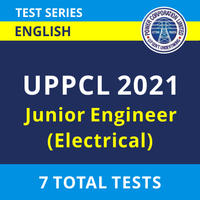
Electromagnetics:
Maxwell’s equations: differential and integral forms and their interpretation, boundary conditions, wave equation, Poynting vector.
Plane waves and properties: reflection and refraction, polarization, phase and group velocity,
propagation through various media, skin depth.
Transmission lines: equations, characteristic impedance, impedance matching, impedance
transformation, S-parameters, Smith chart. Rectangular and circular waveguides, light propagation in optical fibers, dipole and monopole antennas, linear antenna arrays.
UPPCL AE Syllabus 2021 for CS and IT
Digital Logic:
Boolean algebra. Combinational and sequential circuits. Minimization. Number representations and computer arithmetic (fixed and floating point).
Computer Organization and Architecture:
Machine instructions and addressing modes. ALU, data-path and control unit. Instruction pipelining, pipeline hazards. Memory hierarchy: cache, main memory and secondary storage; I/O interface (interrupt and DMA mode).
Programming and Data Structures:
Programming in C. Recursion. Arrays, stacks, queues, linked lists, trees, binary search trees, binary heaps, graphs.
Algorithms:
Searching, sorting, hashing. Asymptotic worst case time and space complexity. Algorithm design techniques: greedy, dynamic programming and divide-and-conquer. Graph traversals, minimum spanning trees, shortest paths.
Theory of Computation:
Regular expressions and finite automata. Context-free grammars and push-down automata. Regular and contex-free languages, pumping lemma. Turing machines and undecidability.
Compiler Design:
Lexical analysis, parsing, syntax-directed translation. Runtime environments. Intermediate code
generation. Local optimisation, Data flow analyses: constant propagation, liveness analysis,
common subexpression elimination.
Operating System:
System calls, processes, threads, inter-process communication, concurrency and synchronization.
Deadlock. CPU and I/O scheduling. Memory management and virtual memory. File systems.
Databases:
ER-model. Relational model: relational algebra, tuple calculus, SQL. Integrity constraints, normal
forms. File organization, indexing (e.g., B and B+ trees). Transactions and concurrency control.
Computer Networks:
Concept of layering: OSI and TCP/IP Protocol Stacks; Basics of packet, circuit and virtual circuitswitching; Data link layer: framing, error detection, Medium Access Control, Ethernet bridging; Routing protocols: shortest path, flooding, distance vector and link state routing; Fragmentation and IP addressing, IPv4, CIDR notation, Basics of IP support protocols (ARP, DHCP, ICMP), Network Address Translation (NAT); Transport layer: flow control and congestion control, UDP, TCP, sockets; Application layer protocols: DNS, SMTP, HTTP, FTP, Email.

NHPC JE All India Live Mock Test Only on Adda247 App!
Related Links
| UPPCL AE/JE Recruitment 2021 Notification | UPPCL AE and JE Vacancy Details 2021 | UPPCL JE Syllabus 2021 for Electrical Engineering |
| UPPCL AE Syllabus 2021 | UPPCL Exam Pattern 2021 for JE and AE | UPPCL Salary Perks and Allowances. |
| UPPCL Previous Year Papers for Junior and Assistant Engineers | UPPCL Previous Year Cutoff Analysis | UPPCL Previous Year Paper Analysis |


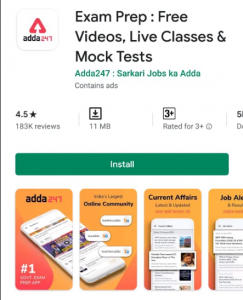


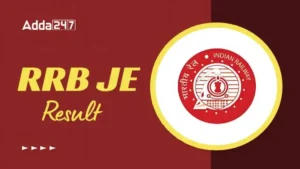 RRB JE CBT 2 Result 2025 Out For 9 Zones...
RRB JE CBT 2 Result 2025 Out For 9 Zones...
 MAHATRANSCO AE Exam Date 2025 Postponed,...
MAHATRANSCO AE Exam Date 2025 Postponed,...
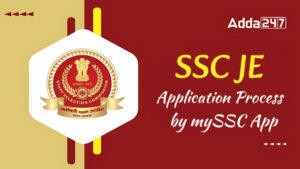 SSC JE 2025 Application Process via mySS...
SSC JE 2025 Application Process via mySS...




